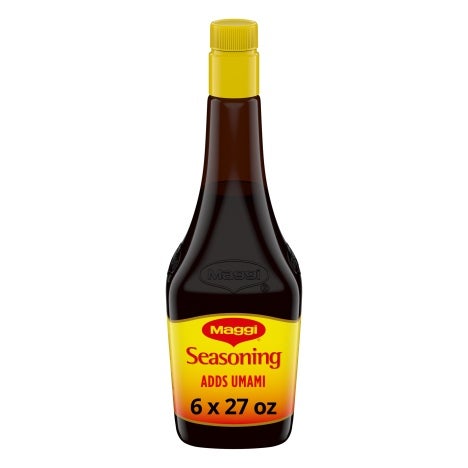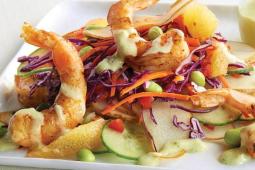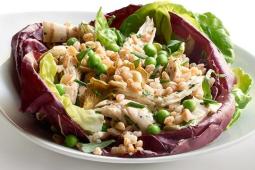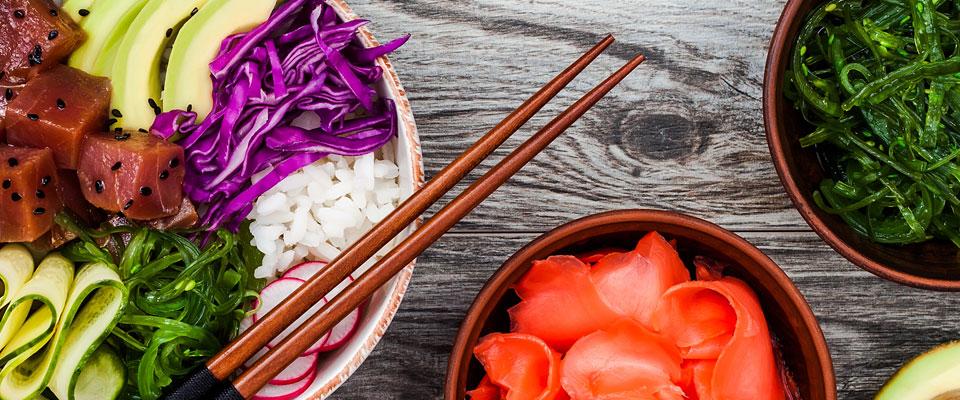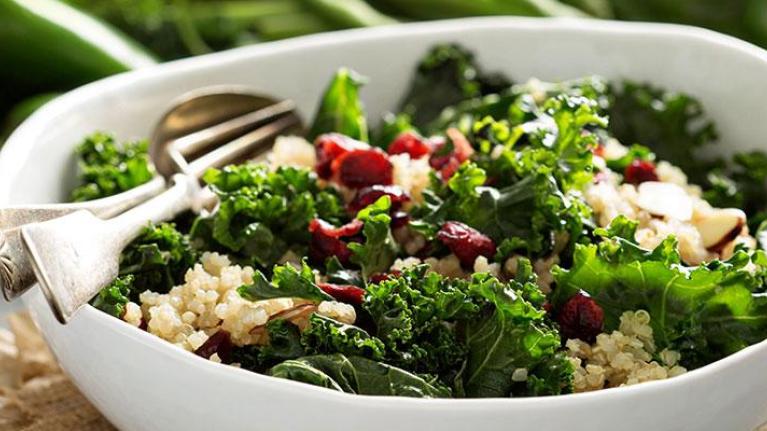
Speak Salad Fluently
Why do 88% of restaurants menu salads? Simple. People love them! Meet the demand with a wide array of salads, from greens only to protein heavy.
If you’re not taking advantage of the versatility of salads, you’re missing out. Today’s salads are so much more than a side of dressed lettuce and tomato or the predictable Caesar topped with grilled chicken.
Salads can be side dishes, appetizers, and shareables. They can be nutritious lunches or lighter entrée options at dinner. They can be vehicles for fresh produce or a showcase for interesting proteins. Salads can also be vegan, vegetarian, or omnivore; budget-wise or premium-priced; hearty or healthful; curated or customizable.
And a successful salad is greater than the sum of its parts, offering satisfying flavors, textures, and even temperatures in every bite—which makes it both craveable for the customer and creative for the kitchen.
No wonder so-called green salads (defined as any salad with a leafy green base) are menued at 88% of all restaurants, according to the most recent Datassential MenuTrends Keynote Report on Salads. And that’s to say nothing of other salad varieties such as grain and pasta salads, as well as deli salads like chicken and tuna.
Like sandwiches, salads are built of components that can be loosely grouped as a base, toppings, and dressing, but within these basic categories the options are truly far-reaching.
Base Basics
Though iceberg will always have its uses, there so are so many other possible green salad bases to experiment with.
- Mixed salad greens ranging from popular spring blend to newer Asian and other specialty combinations
- Grilled sturdy greens such as Romaine, radicchio, or Baby Gem
For more tips and information on salads, see below.
- Spicy, bitter, or extra-flavorful greens like arugula, endive, dandelion greens, or spicy microgreen and sprout mixtures
- Lettuce stand-ins such as cabbage, kale, spinach, and chard
- Fresh herbs such as parsley, basil, and cilantro
- Raw vegetables, including snow or sugar snap peas, fennel, celery, radishes, and broccoli
- Roasted vegetables such as Brussels sprouts, mixed squash, multicolored carrots, or a mix of colorful seasonal selections
Beyond the Green
Many of the most exciting and unusual salads aren’t traditional green salads at all. Sturdy grains, pasta, and other starches also make an ideal building block for a salad.
- Ancient grains, such as quinoa, teff, and farro
- Rice, barley, and other more familiar grains
- Pasta, from delicate orzo to chunky rotini, or even shells to trap other ingredients for a flavorful mouthful
- Asian-style noodles, like soba
- Bread, for example in Italian panzanella (traditionally made with leftover bread) or Middle Eastern fattoush (made with pita)
- Beans and pulses of all kinds: lentils, black beans, garbanzos
Protein Possibilities
Not all salads have to include protein, of course, but for main-course and value-added offerings, there’s much more to choose from than the predictable chicken, steak, and tuna fish. In addition to making a salad special, the following can represent cross-utilization of proteins from other categories, including imperfect items such as broken shrimp.
- Pork, either fresh or cured (such as bacon lardons)
- A freshly fried, poached, or sous vide egg—or even a deviled egg
- Assorted cold cuts, as for a chef’s salad
- Premium seafood, including crabmeat, lobster, or grilled fresh tuna or salmon
- Smoked turkey or chicken
- Duck, including confit
- Salumi and charcuterie, such as mortadella, prosciutto, and saucisson or even pâte
- A prepared specialty item, such as an empanada or samosa
- Cheeses of all kinds, including a centerpiece such as baked goat cheese
Flavor and Texture Boosters
Though there’s lots of overlap with other components of the salad build (such as cheese or green vegetables, for example), this is where signature salads really start to come together in terms of flavor, texture, appearance, and overall interest.
- Fresh or dried fruit (fresh grapes, pomegranate seeds, citrus slices, dried cranberries, etc.)
- Spiced or toasted nuts, which also add protein
- An umami element like olives or anchovies
- Seeds, such as sesame or pumpkin (a.k.a. pepitas)
- Something crunchy: croutons, chow mein noodles, seaweed flakes
- Pickled, marinated, or preserved vegetables, including mushrooms, artichokes, banana peppers, giardiniera, and more
- Crisp cooked vegetables, such as onion rings or frizzled shallots, seared cauliflower florets, or roasted chickpeas
- Roasted or sun-dried tomatoes
- Avocado cubes or slices
- Small veggies like peas, edamame, or roasted corn
Dressing for Success
Salad dressings have come a long way since the days of Italian, French, and Russian. Almost anything moist and flavorful can be deployed as—or into—a salad dressing, opening the envelope for creativity.
- Yogurt-based dressings, especially Greek varieties
- Specialty cheese-based dressings such as Gorgonzola or Asiago
- Global flavor cues in dressings, such as Thai (curry), Korean (kimchi), Mediterranean (tahini), and Latin (adobo)
- Marinades that have been used in the prep of salad ingredients (make sure to follow all proper food-safety procedures)
- Puréed fruit and vegetables in dressings, including specialty items like charred or preserved lemon, smoked tomatoes, and more
- Herb dressings
- Retro-chic dressings, including Green Goddess
- Flavorful elements anchoring dressings, including olives, capers, anchovies, and relish or salsa
Source: Datassential MenuTrends Keynote Report on Salads, 2016
- This recipe for Grilled Latin Caesar Salad with Shrimp demonstrates how grilling the base lettuce can turn an ubiquitous menu staple into a signature
- Learn how to cook ancient grains with this handy reference guide (PDF)
- Top a salad with a Hot Pocket® or Hot Pockets Pizza Stix® to add protein—and value
Many Minor’s® bases, flavor concentrates, and sauces are Ready to Flavor™, making them ready to use in cold applications such as salad dressings and marinades, without the added step of cooking.
- Knifework makes raw vegetables more salad-friendly, such as thinly shaved fennel or shredded broccoli. Spiralizing vegetables such as zucchini is another option
- Cooking the protein element to order not only gives the item freshly made appeal, it also provides contrasting temperature
- The best salads include a balance of sweet, salty, crunchy, and creamy
